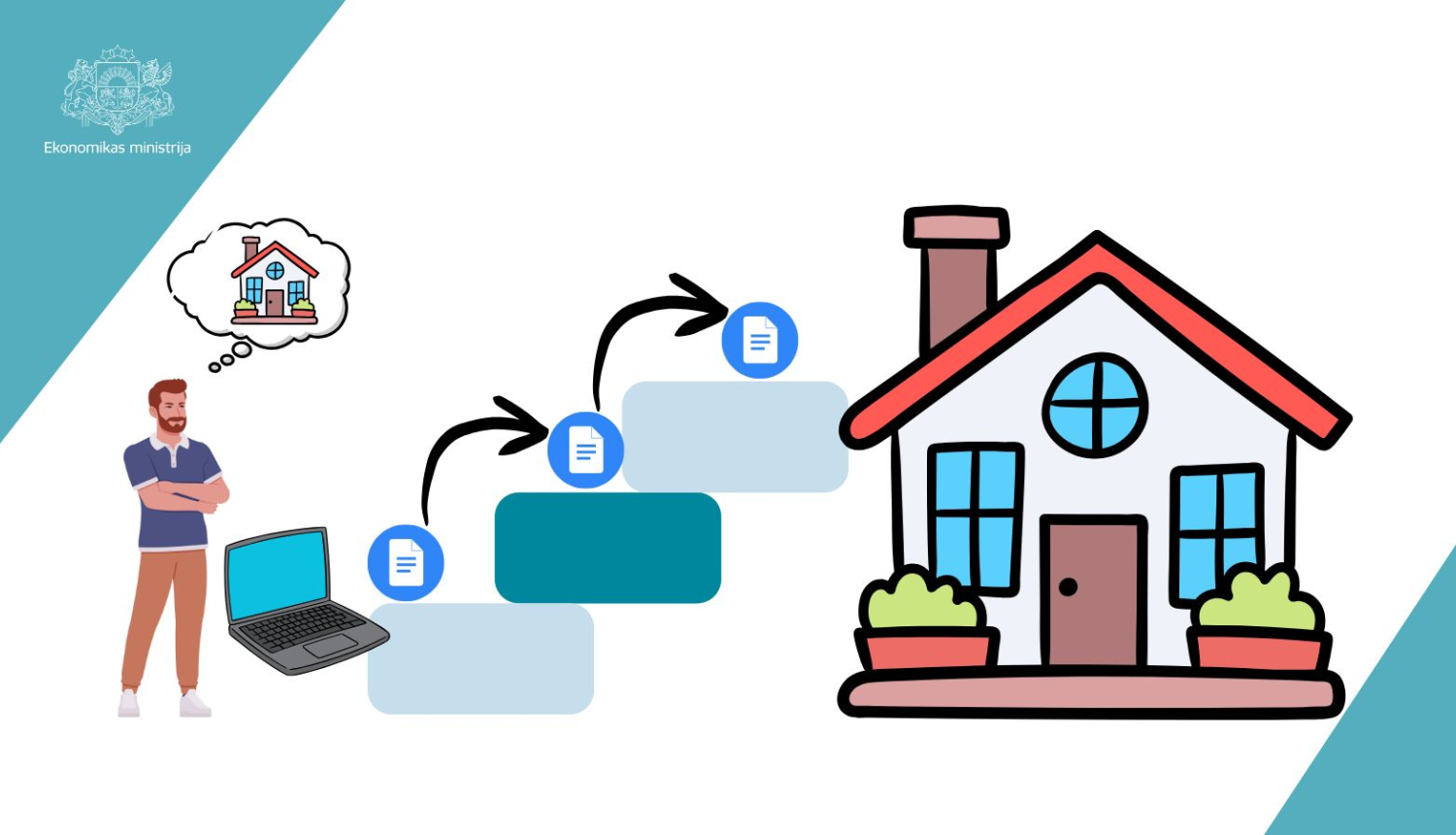Translated using ChatGPT service.
From January 1, 2026, a construction application will also serve as an application for the subsequent registration of the building in the State Real Estate Cadastre Information System and, later, for the entry in the Land Register.
This means that a person will no longer need to contact three separate institutions to complete the development of their property. After the building is commissioned, the data on the building will be automatically transferred at the information system level for registration in the cadastre and then for entry in the Land Register. This will eliminate duplicate data collection and the cadastral survey of the building will no longer be required.
This scenario will be implemented if the amendments to the Construction Law prepared by the Ministry of Economics (MoE), along with related amendments to the Land Register Law and the Law “On the Registration of Real Estate in Land Registers” developed by the Ministry of Justice, which were approved by the government on Tuesday, September 16, also receive parliamentary approval. All three bills contain a unified regulation for implementing a single building registration process, from initiating the construction process to securing property rights.
“The drafted legislation will introduce a one-stop-shop principle – one application to three institutions, which is logical because the real estate development process starts with the construction application and ends with the building’s registration and entry in the Land Register. Data and documents on buildings will be automatically obtained from the Construction Information System (BIS) and forwarded to the related systems, ensuring a sequential process as well as saving time and financial resources,” emphasizes Minister of Economics Viktors Valainis.
The regulation will apply to both new construction and reconstruction or renovation – it will be applicable to construction projects initiated after the law comes into force, as well as projects initiated before the law takes effect but commissioned afterward (provided all conditions are met).
The changes stipulate that cadastral registration of buildings will take place after the building is accepted for use. It is also planned that the State Land Service will obtain cadastral data on buildings from the Construction Information System, rather than conducting surveys and measurements. The procedure for what and how data on buildings is maintained in BIS will change to allow automatic transfer to the cadastre.
The process for which objects are registered in the cadastre or entered in the Land Register will not change. For example, temporary buildings (required for construction work and demolished before commissioning), drainage structures, and similar objects are currently not registered in the cadastre and will continue not to be registered.
The bill will establish the necessary regulations and responsibilities between the involved parties for implementing the unified building registration process (Construction Information System (BIS) – Cadastre – Land Register). Active work is currently underway to adapt the functionalities of all three institutions’ information systems for the introduction of this unified process.



